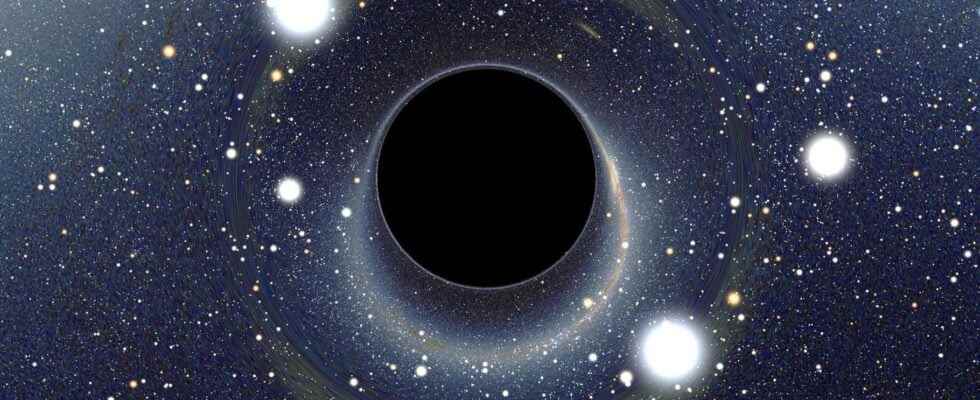This is unheard of and questions the growth models of galaxies and supermassive black holes. The dwarf galaxy Leo I orbiting the Milky Way would contain at its center a black hole as massive as that of our Galaxy.
Towards the end of the 1960s, a few researchers, including Martin Rees but especially his colleague and compatriot theastrophysicist British Donald Lynden-Bell, have argued that the majority of large galaxies must host supermassive black holes at their center. This is a thesis that has been mostly accepted for at least 20 years, even if a definitive proof of the presence of objects having an event horizon in accordance with the predictions of the theory of general relativity still missing.
We have also noticed that there is very often a remarkable and constant relation of proportionality between the masses of supermassive black holes and the masses of the galaxies hosting them, which very probably implies a common growth mechanism. When galaxies like the Milky Way Where M87 were dwarf galaxies, so they must also contain black holes that are certainly massive but less than those we can see in their hearts today.
The dwarf galaxies that we know to be in orbit around’Andromeda and the Milky Way also contain giant black holes that are not of stellar origin? An answer exists today in the case of the galaxy of Lion I (Leo I). It’s a dwarf galaxy spheroidal which is part of our local Group and which is located at approximately 820,000 light years of the Milky Way.
A team of astrophysicists using the observations provided by the instrument called Virus-W on the Harlan J. Smith 2.7-meter telescope, at the McDonald Observatory, has just published an article on the subject in The Astrophysical Journal. It is freely accessible on arXiv.
A supermassive black hole of 3.3 million solar masses
The discovery of a black hole in the heart of Leo I surprises because it is almost as massive as that of our own Galaxy which contains around 4 million solar masses. It is therefore not a black hole of intermediate mass. We had never made a similar discovery before.
Initially, the aim was to better understand the content by black matter by Leo I. As part of the standard cosmological model one of whose pioneers is the Nobel Prize in Physics James Peebles. There should be many dwarf galaxies containing black matter orbiting large galaxies like the Milky Way. This is not the case, the study of those that we know can provide us with information on the nature of dark matter, of which there are several. modeling, or help refute its existence. Leo I puzzled astrophysicists because it seemed to contain less dark matter than its cousins orbiting the Milky Way.
The researchers therefore combined data provided by the Virus-W instrument with simulations on computers to deduce movements from stars and measured the exact distribution and amount of dark matter in Leo I. The data actually turned out to imply the existence of a central supermassive black hole of about 3.3 million solar masses in the dwarf galaxy. , which contradicts the usual law of the relationship between the mass of a giant black hole and the mass of its host galaxy.
Clearly, this is information likely to change the growth models of the size of supermassive black holes and of course galaxies. It may, for example, imply that black holes of several billion solar masses are the result of capture of dwarf galaxies that merge with a large galaxy, a merger that would be accompanied by the coalescence of their giant black holes. Despite everything, it is now believed that the main mechanism behind the growth of these black holes comes from accretion of cold filament material.
In any case, we will know more when we have studied more carefully other dwarf satellite galaxies, which will be precisely what many dwarf galaxies of thesouthern hemisphere who are good targets for the giant Magellan telescope (GMT) currently in construction in Chile, partly designed for this type of work.
Interested in what you just read?
.
fs3
